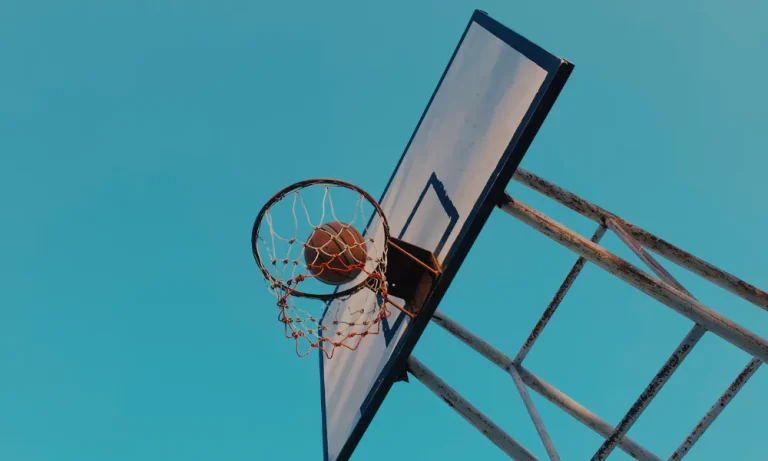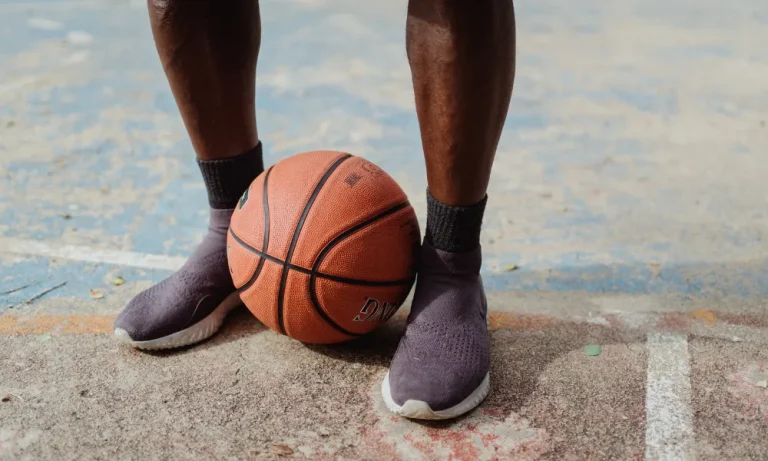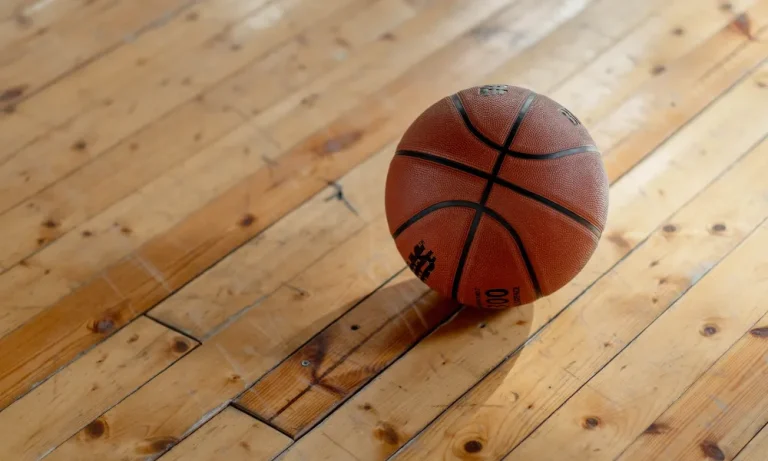How To Fix A Leaking Basketball Valve: A Step-by-Step Guide
Is your basketball losing air pressure and ruining your game? Don’t let a leaking basketball valve deflate your spirits! In this easy-to-follow guide, we’ll show you how to fix that annoying leak and get back in the game. No need to worry, we’ve got you covered.
Identifying a Leaking Valve
Is your basketball losing air pressure faster than usual? It’s time to check if you have a leaking valve. Identifying a leaking valve is crucial to address the issue promptly and avoid any disruptions during your game.
Signs of a Leaking Valve
One clear sign of a leaking valve is a noticeable loss of air pressure in your basketball. If you find yourself constantly inflating the ball, only to have it deflate quickly, there’s a good chance that your valve is leaking.
Pay attention to any hissing sounds coming from the valve area, as this is another indication of air escaping.
Impact on the Game and Performance
A leaking valve can significantly impact your basketball game and player performance. Firstly, the loss of air pressure makes the ball less bouncy and responsive.
Dribbling becomes more challenging, and shooting accuracy may suffer. The inconsistent bounce can throw off your timing and disrupt the flow of the game.
Furthermore, a leaking valve can affect your grip on the ball. As the air escapes, the ball may become softer and harder to control, making it difficult to maintain a firm grip while dribbling or executing moves. This can lead to turnovers and missed opportunities during gameplay.
Tools and Materials Needed
To fix a leaking basketball valve, you’ll need a few essential tools and materials. Having these items on hand will make the repair process smooth and efficient.
Tools:
- Needle-nose pliers: These pliers have long, thin jaws that allow you to grip and manipulate small parts. You’ll use them to remove the old valve from the basketball.
- Rubbing alcohol: Rubbing alcohol is a great cleaning agent that helps remove dirt and debris from the valve area. It ensures a clean surface for the new valve to be installed.
- Valve replacement tool: This specialized tool is used to insert and secure the new valve into the basketball. It helps ensure a tight and secure fit.
Materials:
- New basketball valve: You’ll need a replacement valve that matches the type of valve your basketball has. Whether it’s a needle valve or a screw valve, make sure to get the correct one to fix the leak.
- Teflon tape: Also known as plumber’s tape, Teflon tape is used to create a tight seal between the valve and the basketball. It helps prevent air from escaping through any gaps.
Step-by-Step Repair Process
Fixing a leaking basketball valve is a straightforward process that can be done with a few simple steps. Let’s walk through the repair process and get your basketball back in the game.
Step 1: Deflating the basketball and removing the valve cap
Start by deflating the basketball completely. Use a pump or your mouth to release all the air from the ball. Once deflated, remove the valve cap by unscrewing it counterclockwise. Set the cap aside in a safe place.
Step 2: Inspecting the valve for any visible damage or debris
Take a close look at the valve for any signs of damage or debris. Check for cracks, tears, or any other visible issues that may be causing the leak. If you notice any major damage, it’s best to replace the entire valve.
Step 3: Cleaning the valve and surrounding area
Using a clean cloth or cotton swab, apply a small amount of rubbing alcohol to clean the valve and the surrounding area. Wipe away any dirt, dust, or residue that may have accumulated. Ensure a clean and dry surface for the next steps.
Step 4: Applying sealant or tape to fix minor leaks
If you notice minor leaks or gaps around the valve, you can use Teflon tape or a sealant specifically designed for air leaks. Apply a thin layer of tape or sealant to the valve threads and carefully screw it back into place. Make sure it is snug and secure.
Step 5: Reinstalling the valve and inflating the basketball
Once the valve is securely in place, it’s time to inflate the basketball. Use a pump to gradually inflate the ball to your desired pressure. Check for any signs of air leakage, such as hissing sounds or loss of air pressure. If the leak persists, you may need to repeat the steps or consider replacing the valve.
Alternative Solutions
Sometimes, fixing a leaking basketball valve may require more than a simple DIY repair. In cases of severe valve damage or when the DIY approach doesn’t work, it’s important to explore alternative solutions.
Professional Repair Services
If you’re facing a stubborn leak or have tried the DIY methods without success, it may be time to seek professional help. There are specialized repair services that can fix your basketball valve efficiently.
These professionals have the expertise and equipment to handle more complicated repairs and ensure a proper fix.
Valve Replacement Options
In some cases, the valve damage may be beyond repair, or you may prefer to replace the valve altogether. When considering valve replacement, you have a few options:
- DIY Valve Replacement: If you’re confident in your skills, you can purchase a replacement valve and follow manufacturer instructions to replace it yourself. Ensure you choose the right type of valve for your basketball.
- Sports Equipment Store: Visit a sports equipment store or contact the manufacturer of your basketball to inquire about valve replacement options. They can guide you in selecting the appropriate valve and may even offer installation services.
- Professional Valve Replacement: If you’re not comfortable with DIY replacement or want to ensure a perfect fit, you can take your basketball to a professional repair shop. They will replace the valve for you, ensuring it’s done correctly and minimizing the risk of further damage.
Maintenance Tips to Prevent Leaks
Preventing leaks in your basketball valve is crucial for ensuring the optimal performance and longevity of your ball. By following a few simple maintenance tips, you can keep your valve in excellent condition and avoid the frustration of dealing with leaks.
Regular Inspection
Regularly inspecting your basketball valve is essential for catching any potential issues early on. Take a few moments to examine the valve for signs of damage, such as cracks, tears, or loose threads. If you notice any problems, address them promptly to prevent leaks from occurring.
Proper Storage
Properly storing your basketball when not in use can significantly reduce the risk of valve damage.
Avoid storing your ball in extreme temperatures or direct sunlight, as this can weaken the valve and lead to leaks. Instead, keep your basketball in a cool, dry place, away from sharp objects or heavy items that could put pressure on the valve.
Keep it Clean
Regularly cleaning your basketball, including the valve area, is an effective way to prevent debris buildup and potential leaks. After each use, wipe down the ball with a damp cloth to remove dirt and sweat. Pay extra attention to the valve, ensuring it remains clean and free from any obstructions.
Proper Inflation
Overinflating or underinflating your basketball can put unnecessary strain on the valve, increasing the risk of leaks. Follow the manufacturer’s guidelines or recommended pressure range for your specific ball. Use a reliable pump with a pressure gauge to ensure accurate inflation.
FAQs – How to Fix a Leaking Basketball Valve
What should I do if the DIY methods don’t fix the leaking basketball valve?
If the DIY methods are unsuccessful, consider seeking professional repair services or exploring valve replacement options.
Can I use any type of adhesive to fix a leaking basketball valve?
It is not recommended to use adhesives for fixing a leaking basketball valve, as they may not provide a secure and long-lasting solution. Stick to the recommended DIY methods or seek professional assistance.
Is it possible to replace the basketball valve myself?
Yes, it is possible to replace the basketball valve yourself if you have the necessary skills and the appropriate replacement valve. Follow manufacturer instructions carefully to ensure a proper and secure installation.
How often should I inspect my basketball valve for leaks?
It is advisable to inspect your basketball valve regularly, preferably before each use. This helps in detecting any potential leaks or damages early on and prevents further issues.
Can improper inflation cause a leaking basketball valve?
Yes, improper inflation can put a strain on the valve and increase the risk of leaks. Follow the manufacturer’s recommended pressure range and use a reliable pump with a pressure gauge for accurate inflation.
Conclusion
Fixing a leaking basketball valve is a manageable task that can be accomplished through simple DIY methods. By using household items like soap and water, or employing the toothpick method, you can seal the leak and get back to enjoying your game. Remember, a little effort can go a long way in keeping your basketball in top shape!





